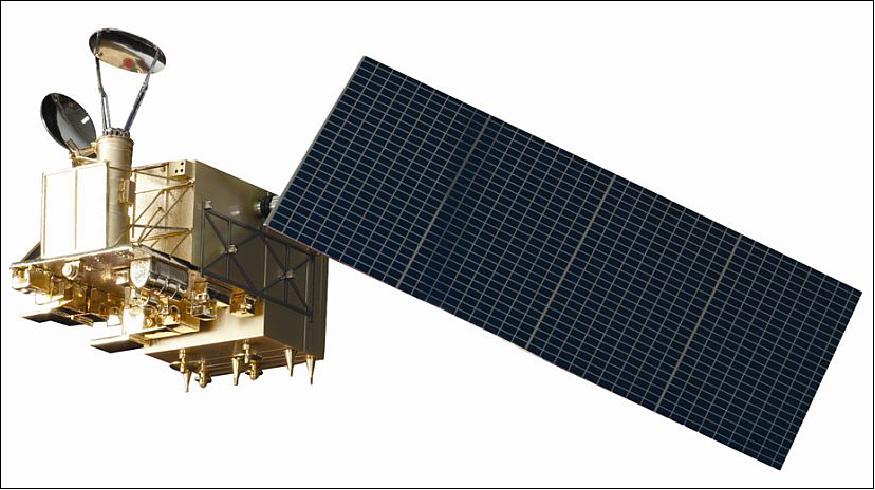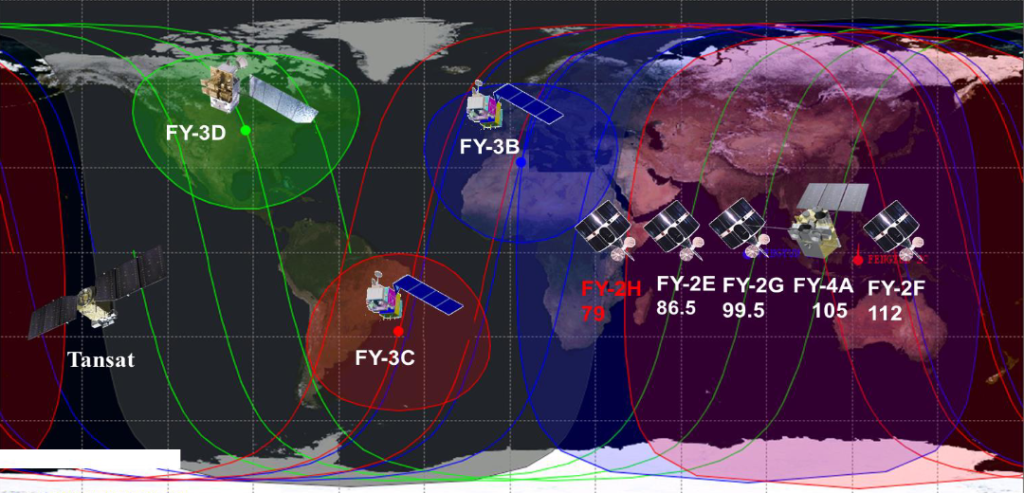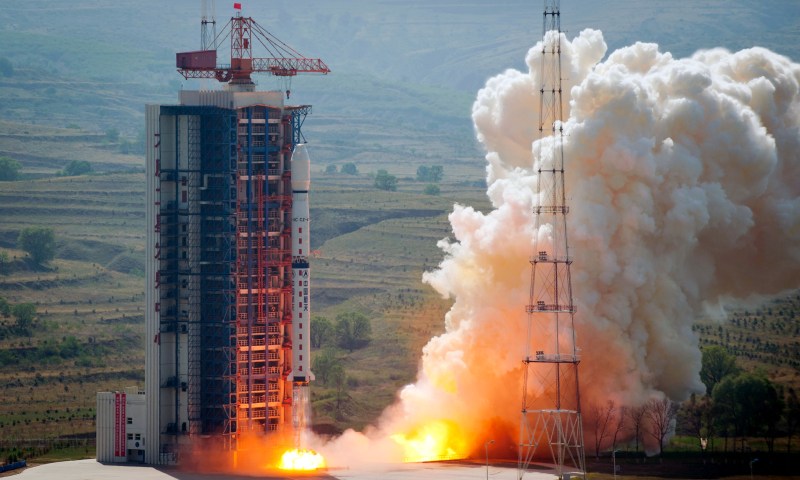Featured image credit: Xinhua
Lift Off Time | July 04, 2021 – 23:28 UTC July 05, 2021 – 07:28 BJT |
|---|---|
Mission Name | Fengyun 3E, a Sun-synchronous meteorology satellite |
Launch Provider | China Aerospace Science and Technology Corporation (CASC) |
Customer | China Meteorological Administration (CMA) |
Rocket | Long March 4C |
Launch Location | Jiuquan Satellite Launch Center, China |
Payload mass | 2,300 kg (~5,070 lb) |
Where did the satellite go? | 836 km Sun-synchronous orbit (SSO), at an inclination of 98.8° |
Did they attempt to recover the first stage? | No, this is not a capability of the Long March 3B/E rocket |
Where did the first stage land? | It crashed back on land over mainland China |
Did they attempt to recover the fairings? | No, this is not a capability of the Long March 3B/E rocket |
Were these fairings new? | Yes |
How was the weather looking? | N/A |
This was the: | – 20th Chinese launch of 2021 – 6th launch of a Long March 4C in 2021 – 34th launch of a Long March 4C – 5th launch of a Fengyun-3 satellite – 64th orbital launch attempt of 2021 (62nd successful launch) |
Replay | If available, an official replay will be listed here |
How did it go?
China sucessfully launched Fengyun-3E on July 4, 2021, at 23:28 UTC. Fengyun-3E is one of China’s next generation weather satellite after Fengyun-4B, which was launched in June this year. It launched on top of a Long March 4C rocket from Taiyuan Satellite Launch Center, China and has been deployed into a 836 km Sun-synchronous orbit (SSO). It added to the nine Fengyun weather satellites that are already and still in orbit around Earth, of which eight are operational. Fengyun-4B is still in transit to its final orbit.
Fengyun-3E
The Fengyun-3E meteorology satellite is China’s 2nd generation of SSO weather satellites with a planned lifespan of at least 5 years. The first Fengyun-3 satellite, Fengyun-3A, was a tech demonstration satellite that was launched in 2008 and is not in service anymore. Fengyun-3E now complements three other Fengyun-3 satellites and is further improving weather monitoring and forecasting for the China Meteorological Administration (CMA).

Equipped with a deployable solar array, Fengyun-3E can provide 2500 W of power for its numerous scientific instruments.

Fengyun-3E Instruments
| Acronym | Full Name | Primary Purpose |
|---|---|---|
| MWHS-2 | Micro-Wave Humidity Sounder -2 | Humidity and temperature measurments through micro-wave sounding |
| SIM-2 | Solar Irradiance Monitor – 2 | Measuring the Sun’s irradiance |
| WindRAD | Wind Radar | Measuring near surface winds |
| SWS/SEM/HEPD | Space Weather Suite / Space Environment Monitor / High Energy Particle Detector | Monitoring charged particle levels in the spacecraft’s orbit |
| SWS/SEM/IMS | Space Weather Suite / Space Environment Monitor / Ionosphere Measurement Sensor | Measuring ionospheric electron temperature and density |
| SWS/Tri-IPM | Space Weather Suite – Triple-angle Ionospheric PhotoMeter | Conducting UV spectrometry of Earth’s Ionosphere |
| XEUVI | Solar X-ray and Extreme Ultraviolet Imager | Solar imagery in the X-ray and EUV spectrum |
| MWTS-3 | Micro-Wave Temperature Sounder – 3 | Measuring of atmospheric temperature levels |
| HIRAS-2 | Hyperspectral Infrared Atmospheric Sounder – 2 | Temperature/humidity sounding, ozone profile and total-column green-house gases |
| MERSI-LL | Medium Resolution Spectral Imager – Low-Light | Monitoring clouds and sea surface temperature |
| SSIM | Solar Spectral Irradiance Monitor | Measuring the Sun’s short-wave irradiance |
| SWS/SEM/MFD | Space Weather Suite / Space Environment Monitor / Magnetic Field Detector | Measuring the magnetic field in the spacecraft’s orbit |
| GNOS-2 | GNSS Radio Occultation Sounder – 2 | Temperature/humidity sounding, monitoring space weather and sea surface wind speed |
Fengyun Satellite Family
Fengyun is Chinese for “Winds and Clouds” and is the name of China’s weather forecasting satellite family. The constellation comprises Fengyun-1, Fengyun-2, Fengyun-3, and Fengyun-4 satellites. While Fengyun-1 and -2 have been the first generation of LEO and GEO weather satellites respectively, Fengyun-3 and -4 are China’s second generation weather satellites in the same orbits, with FY-3s being positioned in SSO and FY-4s in GEO.
| Name | Orbit | Stabilization Method | Status | First Launched |
|---|---|---|---|---|
| Fengyun-1A/D | SSO | Three-Axis Stabilized | Not Operational | September 06, 1988 |
| Fengyun-2A/C | GEO | Spin-Stabilized | Not Operational | June 10, 1997 |
| Fengyun-2D/G | GEO | Spin-Stabilized | Operational | December 08, 2006 |
| Fengyun-3A | SSO | Three-Axis Stabilized | Not Operational | May 27, 2008 |
| Fengyun-3B/D | SSO | Three-Axis Stabilized | Operational | November 04, 2010 |
| Fengyun-4A/B | GEO | Three-Axis Stabilized | Operational | December 10, 2016 |
| Fengyun-4C/G | GEO | Three-Axis Stabilized | Planned | NET 2022 |
The China Meteorological Administration plans to launch Fengyun-3F to Fengyun-3J, as well as Fengyun-4C to Fengyun-4G in the upcoming years and decades, covering their need for meteorology satellites until 2040, with the last satellites planned to launch in 2030 and 2033 respecively.

Long March 4C
The Long March 4C is a 3 stage medium-lift launch vehicle derived from China’s Long March 4B vehicle. It is able to put up to 4,200 kg into low-Earth orbit, and up to 1,500 kg into geostationary transfer obit (GTO).

First Stage
The first stage has 4 open cycle YF-21C engines. Each engine runs on dinitrogen tetroxide (N2O4) and unsymmetrical dimethylhydrazine (UDMH), producing 740 kN of thrust each, with a specific impulse (ISP) of 260 seconds. Overall, the first stage produces 2,960 kN of thrust and carries 182,000 kg of propellent. The first stage is 27.91 meters tall, and 3.35 meters in diameter.
Second Stage
The second stage runs on a single YF-24C engine, which contains 1 main YF-22C engine for thrust, and 4 YF-23C attitude control thrusters. The main engine produces 742 kN of thrust and the attitude control thrusters each produce 47 kN, and both run on N2O4 and UDMH. The main engine’s ISP is 300 seconds, and the attitude control thrusters have an ISP of 289 seconds. The second stage is 10.9 meters tall, 3.35 meters in diameter, and carries 52,700 kg of propellent.
Third Stage
The third stage has two open cycle YF-40A engines that also run on N2O4 and UDMH. Each engine produces just over 100 kN of thrust and has an ISP of 303 seconds. The third stage is 14.8 meters tall and 2.9 meters wide.




